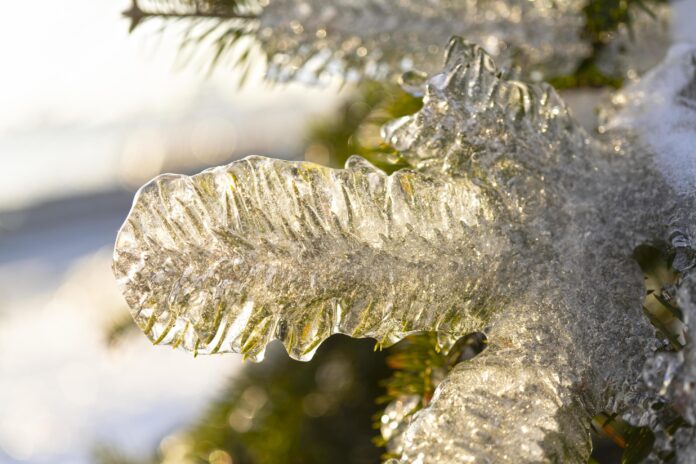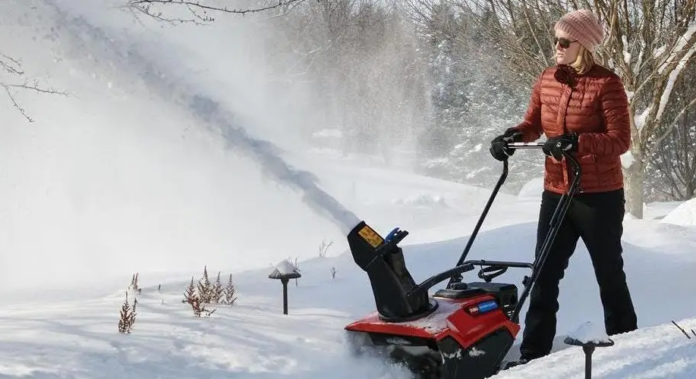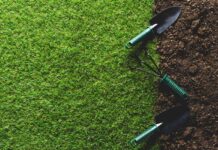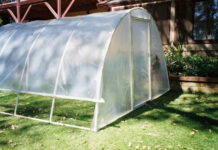
Snow piled up in the garden is not a very good idea. While it should be noted that it forms a natural protective layer for garden vegetation, it should not be left alone. Snow in the garden is in many cases a destructive action.
So how to act to effectively get rid of snow from the garden? What kind of damage can it cause? How to properly take care of a garden that is regularly covered with snow?
Too Much Snow Heaps Unfavorable for Vegetation
A large layer of snow lying in the garden has an extremely negative effect on vegetation. Lying snow will damage plants, by deforming them. Heaps of snow will also block the vegetation’s access to the all-important oxygen. Small amounts or a complete lack of oxygen will lead to the rotting of plants, making it necessary to put a lot of work into restoring them in the spring.
Also, keep in mind that snow can adversely affect shrubs and trees. Branches become bent, and in some situations, there will be a process of breaking. With smaller, weaker shrubs, you can even expect branches to break off. Thus, shrubs so damaged, will not be suitable for anything.
Anyone who cares about his garden should regularly shake the snow off the branches, using, for example, a broom. Smaller shrubs, more strongly exposed to the destructive effects of snow, it is worth carefully tying with string. This will protect them from deformation.
You might be interested in – Best Snow Blower For Decks.
A Crust of Ice Under the Snow

Even after clearing the snow from the garden, a crust of ice is to be expected. It is extremely dangerous, as the ice forms a tight layer through which air does not get in. Lawns in particular suffer from this, as they do not receive adequate oxygen. The consequence is their rapid destruction.
The remaining plants that are under the ice crust will have trouble growing. To get rid of it, and at the same time not destroy the grass, it is necessary to crush the ice in a gentle and careful way.
How to Effectively and Safely Remove Snow from The Garden?
When joining the fight against snow in the garden, it is not enough to grab a shovel and vigorously collect everything. It is worth being aware of certain rules when doing cleanup work.
It is certainly undesirable to trample paths in the lawn. Shoveling snow, just to move around the garden comfortably, will mean destroying the grass. Where paths are trampled in the snow, after the snowmelt there will be completely rotten grass, requiring replacement.
When removing snow from the garden, under no circumstances should you use table salt or chemicals. It is known, salt is excellent for dissolving snow, but it is not about speed.
It is an extremely lethal agent for vegetation, as the process of physiological drought will occur very quickly. Physiological drought is a phenomenon that causes plants to lack the ability to take up water, resulting in their rapid withering.

When getting down to shoveling snow in the garden, it is advisable to have shovels, shovels that have a plastic bucket, at most topped with a metal sheet. The snow with such tools will be well collected, and the vegetation will not suffer during the work. For smaller amounts of snow and when it is fluffy and dry, you can take the help of a sturdy broom.
The collected snow should be dumped under at the extremes of the garden, without covering the vegetation. A good place for the collected snow is the trunks of trees. Not only will it get rid of it from the lawn, for example, but it will also provide the trees with additional moisture.
What About Snow in The Garden Environment?
Naturally, snow will accumulate not only in the garden, and on the vegetation, but also in the neighborhood. How to effectively and reliably remove it from paths and sidewalks, so that it is neat and safe? Here, too, all you need is a sturdy shovel.
When cleaning sidewalks made of paving stones, be careful not to damage the ground too much when removing ice. It is discouraged to use salt, and chemicals, as they can easily get into the garden vegetation. To make sure that paths and sidewalks are not icy, you can sprinkle them with sand.
It is also worth remembering to install appropriate protection on the external parts of the roof. Large heaps of snow deposited on the roof can fall off at any time. Roof hurdles significantly minimize the risk of large amounts of snow falling from the roof.








